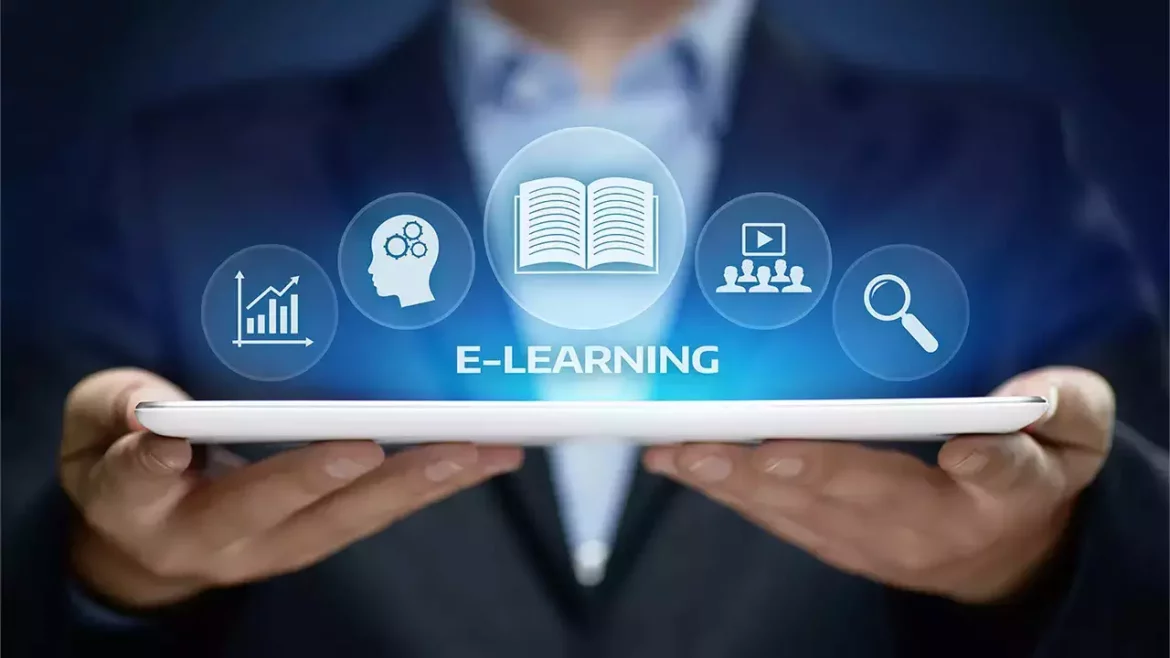Introduction
E-learning, short for electronic learning, has emerged as a transformative force in the field of education. With the advent of technology and the internet, e-learning has opened up new horizons for learners of all ages, breaking down barriers of time and space. This article delves into the world of e-learning, exploring its history, benefits, challenges, and the ways it is reshaping the future of education.
Understanding E-Learning
E-learning encompasses any form of learning that uses electronic technologies to deliver educational content. It ranges from simple online courses to sophisticated virtual classrooms and fully immersive virtual reality experiences. E-learning platforms can include web-based learning management systems, mobile applications, video conferencing tools, and interactive multimedia modules.
The History of E-Learning
The origins of e-learning can be traced back to the early 1960s when researchers began to experiment with computer-based teaching programs. The PLATO (Programmed Logic for Automatic Teaching Operations) system, developed at the University of Illinois, was one of the pioneering efforts in computer-assisted instruction. In the 1990s, the rise of the internet facilitated the development of web-based e-learning, making education more accessible to a global audience.
Benefits of E-Learning
- Flexibility and Accessibility: E-learning allows learners to access educational content anytime, anywhere, and at their own pace. This flexibility is particularly beneficial for students with diverse schedules or geographical constraints.
- Personalized Learning: E-learning platforms often use adaptive algorithms and data analytics to tailor educational content to individual learners’ needs and learning styles, enhancing the learning experience.
- Cost-Effectiveness: E-learning can significantly reduce the costs associated with traditional classroom-based education, such as travel expenses, printed materials, and facility maintenance.
- Lifelong Learning Opportunities: E-learning facilitates continuous learning throughout life, enabling professionals to upgrade their skills and knowledge without interrupting their careers.
- Global Reach: E-learning transcends geographical boundaries, enabling learners from different parts of the world to connect and collaborate on shared educational goals.
- Multimodal Learning: E-learning incorporates various multimedia elements, such as videos, animations, and interactive quizzes, to engage learners and enhance information retention.
Challenges of E-Learning
- Technological Barriers: Access to e-learning depends on reliable internet connectivity and access to appropriate devices, which may be limited in some regions or communities.
- Digital Literacy: Not all learners may possess the necessary digital literacy skills to navigate e-learning platforms effectively, hindering their educational experience.
- Lack of Social Interaction: E-learning can sometimes lack the social dynamics of traditional classrooms, leading to reduced peer interaction and collaborative learning opportunities.
- Quality Assurance: The proliferation of e-learning content and platforms raises concerns about the quality and accuracy of educational materials available online.
- Motivation and Self-Discipline: E-learning requires learners to be self-motivated and disciplined to manage their study schedules effectively.
Types of E-Learning
- Asynchronous E-Learning: Learners access pre-recorded content and engage in self-paced study, enabling them to learn at their convenience.
- Synchronous E-Learning: Learners participate in live, real-time virtual classes or webinars, fostering immediate interaction with instructors and fellow students.
- Blended Learning: Blended learning combines elements of both traditional classroom instruction and e-learning, offering a balanced and personalized learning experience.
- Mobile Learning (M-Learning): M-learning delivers educational content via mobile devices, allowing learners to access information on the go.
- Massive Open Online Courses (MOOCs): MOOCs offer open-access courses to a large number of learners worldwide, often provided by prestigious universities and institutions.
E-Learning in Different Educational Settings
- K-12 Education: E-learning has become increasingly prevalent in K-12 education, offering interactive resources, virtual classrooms, and online tutoring.
- Higher Education: Colleges and universities worldwide incorporate e-learning into their curriculum, providing online courses and distance education programs.
- Corporate Training: E-learning is widely adopted by businesses for employee training and professional development, enhancing workforce skills and performance.
- Professional Certifications: E-learning platforms offer courses and materials to prepare individuals for various professional certifications and licensing exams.
E-Learning Tools and Technologies
- Learning Management Systems (LMS): LMS platforms facilitate course creation, content delivery, and student progress tracking.
- Video Conferencing: Video conferencing tools enable real-time interactions, allowing learners and instructors to engage in discussions and virtual classrooms.
- Virtual Reality (VR) and Augmented Reality (AR): VR and AR technologies create immersive learning experiences, allowing learners to interact with simulated environments.
- Gamification: Gamified e-learning incorporates game elements to enhance engagement and motivation.
- Artificial Intelligence (AI): AI-driven e-learning platforms use algorithms to personalize content and provide intelligent feedback to learners.
The Future of E-Learning
The future of e-learning is full of potential, driven by technological advancements and evolving educational needs:
- Artificial Intelligence and Personalization: AI will play an increasing role in providing personalized learning experiences, tailoring content to individual learners’ abilities and preferences.
- Virtual and Augmented Reality: VR and AR technologies will offer more immersive and interactive learning experiences, making education more engaging and effective.
- Microlearning: Bite-sized and focused learning modules will gain popularity, catering to learners’ busy schedules and attention spans.
- Data Analytics: Advanced data analytics will provide insights into learners’ progress and performance, enabling instructors to optimize course design and content.
- Global Collaboration: E-learning will foster global collaboration, connecting learners and educators from diverse cultures and backgrounds.
Conclusion
E-learning represents a paradigm shift in education, providing learners with unprecedented flexibility, accessibility, and personalized learning experiences. While it faces challenges related to technology, digital literacy, and quality assurance, the benefits of e-learning are reshaping education on a global scale. The future of e-learning is poised to be even more dynamic and transformative, with cutting-edge technologies like AI, VR, and AR paving the way for a new era of immersive and engaging learning experiences. As technology continues to evolve, e-learning will undoubtedly play a crucial role in empowering individuals and societies to embrace lifelong learning and unlock their full potential in an ever-changing world.





